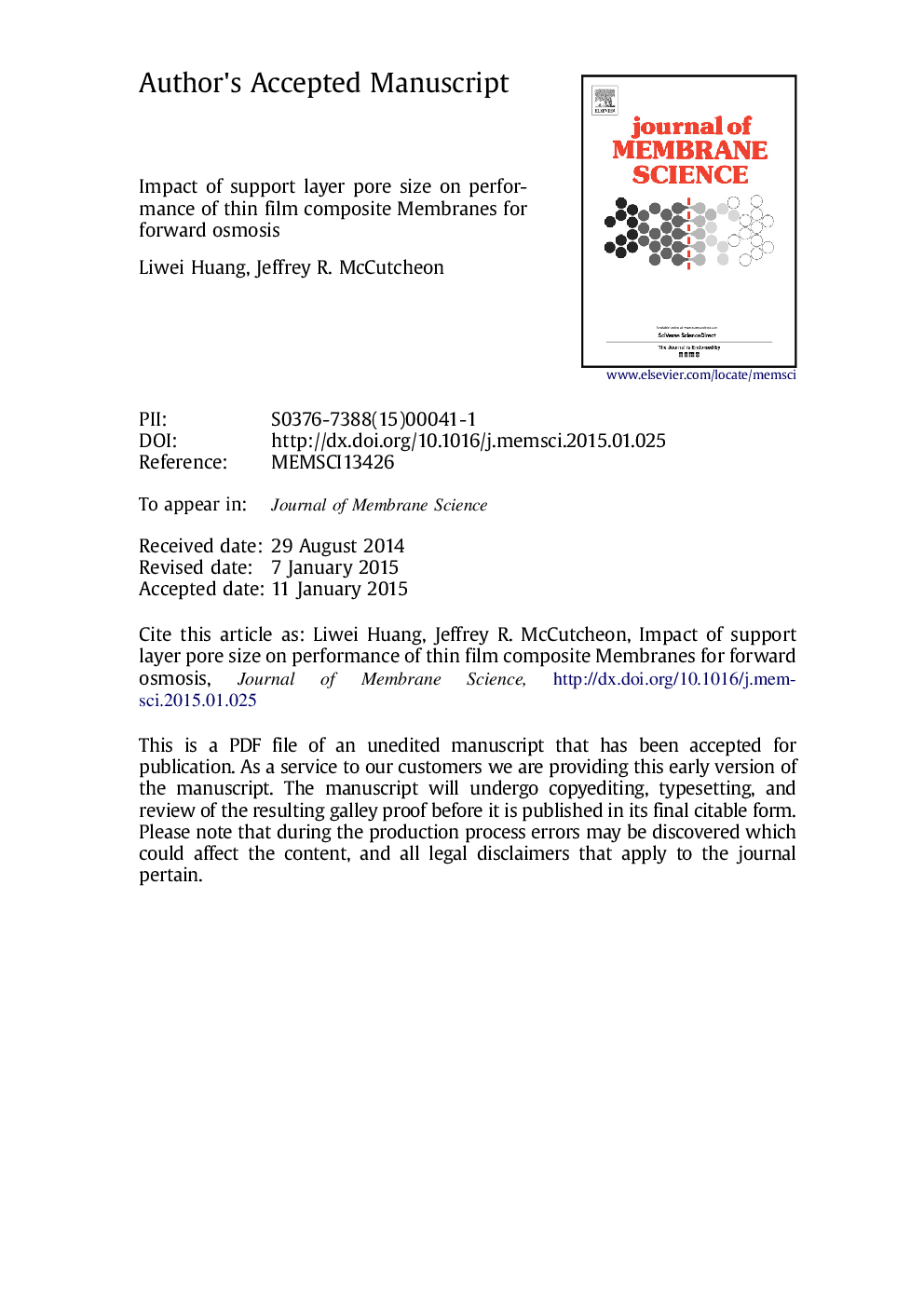| Article ID | Journal | Published Year | Pages | File Type |
|---|---|---|---|---|
| 633059 | Journal of Membrane Science | 2015 | 31 Pages |
Abstract
Previous investigations of forward osmosis (FO) concluded that thin film composite (TFC) membranes should be designed with hydrophilic supports to help mitigate internal concentration polarization and improve water flux. A number of research groups and companies around the world have responded to those findings by developing TFC membranes with hydrophilic supporting materials. However, there has been few fundamental studies on how hydrophilic support structure affects selective layer formation and hence membrane performance. Here, a systematic investigation on the influence of support layer pore size on the osmotic performance of thin film composite membranes is conducted for the first time. Specifically, TFC membranes were made by interfacial polymerization to form a polyamide selective layer on top of a series of commercially available nylon 6,6 microfiltration membranes with similar physical and chemical properties but different pore sizes. The interfacial polymerization process is affected by the support pore dimensions and the resulting polyamide composite membranes exhibited varying film morphology, cross-linking degree, mechanical integrity, and permselectivity. Osmotic flux tests show that the osmotic flux performances (water flux, salt flux and specific salt flux) are dependent on a permeability-selectivity trade-off which is in part impacted by the pore size of the support layer.
Keywords
Related Topics
Physical Sciences and Engineering
Chemical Engineering
Filtration and Separation
Authors
Liwei Huang, Jeffrey R. McCutcheon,
